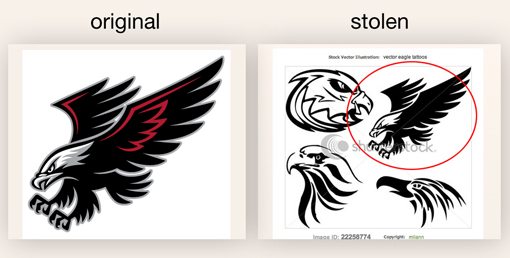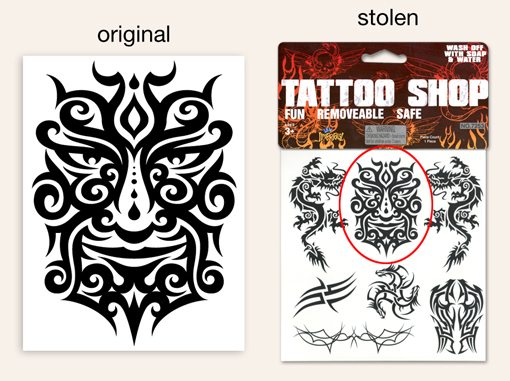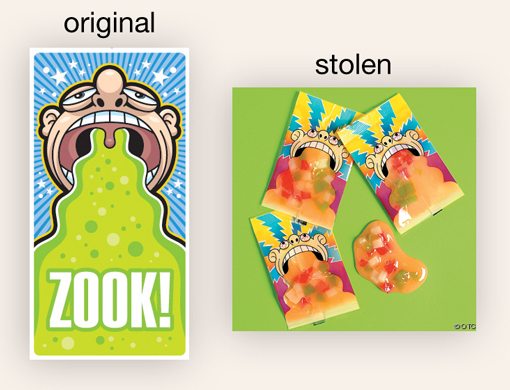What to Do if Someone Steals Your Design
Protecting your intellectual property has always been a difficult task and the Internet has only served to complicate matters. The web has become an unoriginal designer’s one stop shop for endless material to shamelessly ripoff. Today we’ll take a look into some of the reasons design theft is so rampant online and explore some answers to the essential question of what to do if someone steals your design. A big thanks to Von Glitschka for providing much of the content and advice seen below!
2 Million+ Digital Assets, With Unlimited Downloads
Get unlimited downloads of 2 million+ design resources, themes, templates, photos, graphics and more. Envato Elements starts at $16 per month, and is the best creative subscription we've ever seen.
The Problem
Putting your work on the web gives you next to zero control over who views that content and what they do with it. Your portfolio site could be stomping grounds for someone looking for a quick logo design, website layout, etc. One of the main issues here is that it’s so easy to just grab a piece of artwork off of someone’s site, reproduce it, sell it and never get caught. It’s also virtually impossibly to monitor this kind of theft to any successful degree without significant resources. The best you can do on your own is merely hope that no one is stealing your work and that you or someone else will notice if it ever does happen (learn how to obtain commercial protection below).
A Fine Line
Another major problem is defining what exactly constitutes a theft of intellectual property. The online design community is currently obese with daily doses of “inspiration” contained in blog posts. We designers post and use this content to admittedly influence our own projects. Browsing the designs of others can give you great ideas for color schemes, theme ideas, graphical styles, layout alternatives and any number of other possibilities.
However, there is an immensely fuzzy line between inspiration and theft. Exactly where that line lies is perhaps different for every designer. My best advice is to consciously avoid ripping off the ideas of others by using inspirational artwork as a leaping point for your own significantly different creation. Unfortunately, even if you’re on your best behavior, there’s still no shortage of people out there that aren’t so honest. To prove my point, let’s look at some real life examples from an artist who seems to have quite the ongoing struggle with this very issue.
The Vonster Scandals
Anyone active in the online design community has probably heard or seen a thing or two from Von Glitschka (@vonster for my fellow Twits). Von is an amazingly talented Illustrator with a portfolio rich in impressive character illustrations, hand drawn lettering and logo designs. Unfortunately, as Von has discovered, you can make people like your work so much that they want to claim it as their own. He frequently encounters instances of companies or individuals using and/or selling his artwork completely without consent (a whopping 16 times in 2009 alone!).
Hawk Mascot
The original artwork above was not only ripped off, but actually uploaded to a stock art site to sell to other designers! The ignorance this thief showed towards the likelihood of someone finding this is quite remarkable!
Tribal Tattoo Face
In this instance a toy company grabbed Von’s artwork and sold it in the real world as part of a children’s temporary tattoo package. It definitely makes you wonder where the other tattoo art came from as well!
Barf Bag Art
As you can see in the images above, the theft isn’t always an outright copy of the art as with the previous two examples. This artist took the time to adjust the facial features a bit, no doubt to give themselves a little arguing room should they get caught. Here we see that fine line between inspiration and theft being flirted with. Some might say that the final result is different enough than the original to no justify theft, however I disagree completely (and so did Von). The angle of the head, the shape of the cheek line and teeth, the oval nostril holes, and the waviness lines of the spew are all far too similar for the artist to claim that the artwork is original.
How to Respond
If you find that someone has indeed used your artwork without consent, the easiest thing to do is to get mad (or even flattered) and brush it off as out of your control. The most difficult thing to do is launch a wildly expensive and drawn out legal battle that will probably cost you more money than you’ll gain. Both of these reactions are fairly undesirable and shouldn’t necessarily be your first choice. Here are a few tactics to try first (some straight from the Vonster himself).
Report It To The Site Owner
If you notice the infringement on a stock art site or something similar, odds are they have a reporting system in place and actually take copyright infringement very seriously. Recently I encountered just such a situation on one of the Envato marketplaces when another author uploaded a piece of art that seemed indisputably based on my best selling item. I simply clicked a button that said “report item” and gave a brief argument as to why I thought this represented an infringement. Within 24 hours the art was removed and the author had written me an apology for any similarities his artwork bore to my own. The ease of this solution makes it among the best possible, but it applies only in very specific circumstances and won’t even be an option with most infringements you encounter.
Do Your Homework
If the infringement occurs outside of a controlled community, the first thing you need to do is become aware of your rights. The Digital Millennium Copyright Act (DMCA) seems to be the standard piece of legislation that covers you in these circumstances. As Von points out on his blog, you technically own the rights to your own artwork whether you’ve officially filed any paperwork to that end or not. However, possessing an actual legal copyright beforehand makes it much easier to pursue prosecution of the theft.
Write a Copyright Infringement Letter
After you’ve researched a bit and understand your rights, the next step is to contact the company or individual disseminating your artwork without approval. There are guidelines set forth by the DMCA regarding what should be contained in this letter. Fortunately, good old Von has written enough of these that he has created a template that does the work for you. In this letter he outlines each requirement and gives an example sentence for how to address the requirement in the letter.
Hopefully, the infringement letter will be enough to make the offender back down. If you come across as a calm professional, knowledgeable of your rights and intent on resolving the matter, you’ll find that many businesses or individuals will be eager to seek an end the situation before it becomes too serious.
Go Public
One particularly interesting tactic that Vonster discovered was to inform his Twitter followers of the transgression. This can lead to lots of helpful advice and an all out uprising of enraged designers completely willing to flood the offender with angry emails. An angry mob is a lot harder to ignore than a lone complainer!
The Big Guns
Obviously, there are several scenarios where reasonable requests simply don’t appeal to unreasonable people. In these circumstances, you’ll have to find a decently affordable copyright attorney to back you up. Always be mindful of how much time and resources you’re willing to spend to ensure the problem is resolved.
A List of Demands
Upon finding out that your art has been stolen your initial reaction will no doubt be to cry out for retribution. As soon as an attorney enters the matter you might even have a tendency to start thinking about a hefty settlement. My advice for this is to analyze the situation carefully before making any demands.
Obviously, the first thing to request is that your artwork be immediately removed from wherever it is being used. After this, the key question to ask yourself is how much you think the company or individual has unlawfully profited from your artwork. In some circumstances this number could be substantial but in many more instances it will be quite minimal. Try to avoid being greedy as exuberant requests will complicate matters and ensure a negative response from the person or company in question. If you’re unsure as to their profit, it is often appropriate to request a usage fee proportional to what you would’ve charged them for the art in the first place (plus a slight PIA charge of course).
Keep in mind that if your artwork is being used in a commercial product, pulling it off shelves will result in serious financial setbacks for the offending company. This will of course cause them to resist heavily but if you succeed in getting the item pulled know that a little justice has been served simply by that action alone.
Prevention
If you’re concerned that you may become a victim of intellectual property theft, you’ll want to seriously consider sending off the paperwork to copyright certain items you see as high-risk. Other than that, you should explore options for digitally watermarking your images to track and prevent theft. Below are a couple of possible solutions for you to check out.
Digimarc
“Imperceptible to human senses, Digimarc’s digital watermarking technology allows users to embed digital information into audio, images, video and printed materials in a way that is persistent, imperceptible and easily detected by computers and digital devices.”
Civolution
“Civolution is a leading provider of technology and solutions for identifying, managing and monetizing media content. Civolution offers an extensive portfolio of watermarking and fingerprinting technology solutions for forensic tracking of media assets in pre-release, digital cinema, PayTV and online. Through its service portfolio, Civolution offers world-class broadcast and internet intelligence to help media content owners control their assets and unlock new revenue streams.”
Conclusion
Having your artwork stolen is no walk in the park. It’s a messy, time-intensive problem that will do it’s very best to leave you frustrated and tired of fighting. I hope this article has shed a little light into how to respond to this growing problem, before and/or after it occurs to you.
Have you ever had your artwork stolen? Let us hear your stories in the comments below. Be sure to share any advice you have to others going through the same problem.










